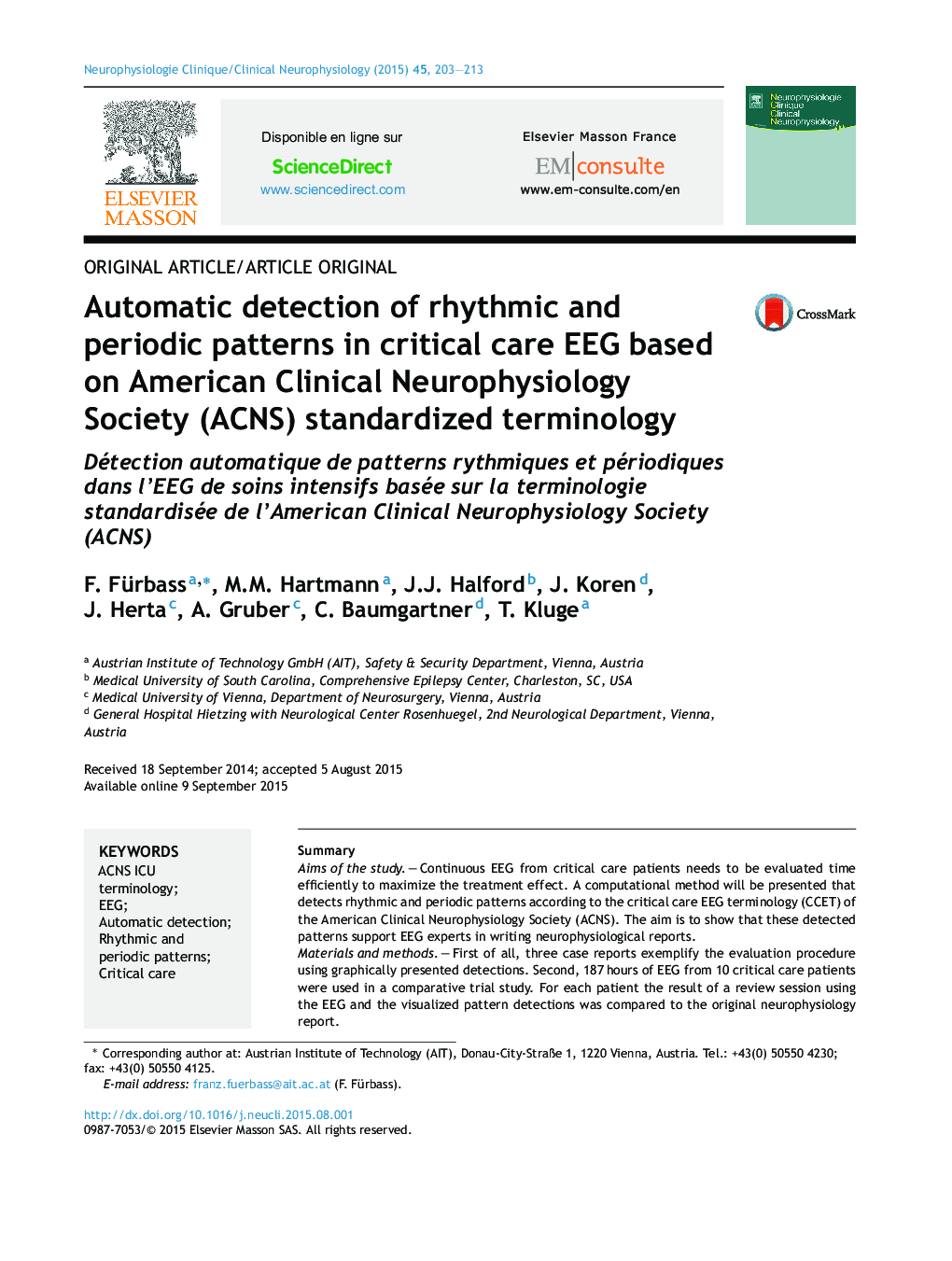| کد مقاله | کد نشریه | سال انتشار | مقاله انگلیسی | نسخه تمام متن |
|---|---|---|---|---|
| 3082275 | 1189517 | 2015 | 11 صفحه PDF | دانلود رایگان |

SummaryAims of the studyContinuous EEG from critical care patients needs to be evaluated time efficiently to maximize the treatment effect. A computational method will be presented that detects rhythmic and periodic patterns according to the critical care EEG terminology (CCET) of the American Clinical Neurophysiology Society (ACNS). The aim is to show that these detected patterns support EEG experts in writing neurophysiological reports.Materials and methodsFirst of all, three case reports exemplify the evaluation procedure using graphically presented detections. Second, 187 hours of EEG from 10 critical care patients were used in a comparative trial study. For each patient the result of a review session using the EEG and the visualized pattern detections was compared to the original neurophysiology report.ResultsIn three out of five patients with reported seizures, all seizures were reported correctly. In two patients, several subtle clinical seizures with unclear EEG correlation were missed. Lateralized periodic patterns (LPD) were correctly found in 2/2 patients and EEG slowing was correctly found in 7/9 patients. In 8/10 patients, additional EEG features were found including LPDs, EEG slowing, and seizures.ConclusionThe use of automatic pattern detection will assist in review of EEG and increase efficiency. The implementation of bedside surveillance devices using our detection algorithm appears to be feasible and remains to be confirmed in further multicenter studies.
RésuméButs de l’étudeL’EEG continu (cEEG) des patients en unité de soins intensifs doit être évalué plus efficacement pour optimiser le traitement. Nous présentons une méthode informatique de détection de patterns rythmiques et périodiques. Celle-ci est basée sur la terminologie de soins intensifs (CCET) de l’American Clinical Neurophysiology Society (ACNS). Le but est de montrer que la détection de ces patterns permet aux experts d’écrire plus facilement des rapports neurophysiologiques.Méthodes et matériauxDans un premier temps, trois études de cas illustrent la procédure d’évaluation en utilisant des détections présentées graphiquement. Ensuite, 187 heures d’EEG venant de dix patients d’unités de soins intensifs ont été introduites dans une étude comparative. Pour chaque patient, le résultat d’une session de révision utilisant l’EEG et la détection des patterns a été comparé avec le rapport neurophysiologique original.RésultatsParmi les cinq patients ayant eu des crises épileptiques, les crises de trois patients ont été reconnues correctement. Les deux autres patients avaient des crises cliniques très subtiles et sans corrélation claire dans l’EEG. Les patterns périodiques latéralisés (LPD) ont été correctement reconnus chez les 2 patients concernés et un ralentissement du EEG a été correctement reconnu dans 7/9 cas. Pour 8/10 patients des caractéristiques additionnelles ont été identifiées, incluant des patterns périodiques latéralisés, un ralentissement de l’EEG et des crises.ConclusionL’utilisation d’algorithmes de détection automatique basés sur la CCET assisteront dans la révision de l’EEG et augmenteront son efficacité. L’implémentation de dispositifs de surveillance utilisant notre algorithme sera possible et sera montré dans de futures études multicentriques.
Journal: Neurophysiologie Clinique/Clinical Neurophysiology - Volume 45, Issue 3, September 2015, Pages 203–213